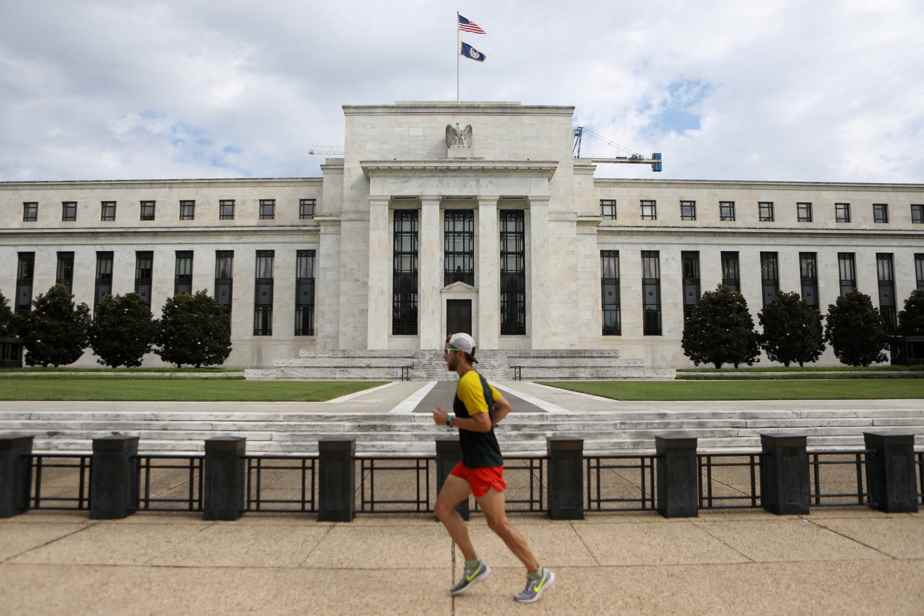(Washington) Barring an about-face, the US Federal Reserve will aggressively raise its key rates on Wednesday to control spiraling inflation, a delicate battle far from won with the risk of plunging the United States into recession.
Posted at 10:12 a.m.
The meeting of the Federal Reserve (Fed) Monetary Policy Committee (FOMC) resumed Tuesday at 9 a.m. “as planned,” said a spokeswoman for the institution. The Committee will announce its decision at 2 p.m., a priori by half a percentage point, which would be the first of this magnitude since May 2000.
In March, the Fed had started to raise rates, for the first time since 2018. But it had acted cautiously by raising them to a range between 0.25 and 0.50%, an increase of 0.25 points. percentage.
However, it had signaled its desire to make six other increases this year, or as many as meetings by the end of 2022.
Since then, inflation has continued to rise. Worsened by the war in Ukraine, in March it reached a peak not seen since December 1981: +8.5% over one year, according to the CPI index.
It was the president of the powerful institution, Jerome Powell, who himself announced on April 21 that it was “absolutely essential” to restore price stability and to raise rates “rapidly”.
The US Federal Reserve has two main missions: to ensure price stability and full employment.
In addition to the surge in prices, Jerome Powell deplores a job market at an “unhealthy” level.
Indeed, the unemployment rate is close to its pre-pandemic level (3.6% in March compared to 3.5% in February 2020).
And companies have faced labor shortages and mass quits for months. In March, another 4.5 million people left their jobs, while the number of job offers soared to 11.5 million, a record, according to the statistics office.
To attract candidates and retain employees, companies increase wages, which has the effect of fueling inflation.
Specter of a recession
In addition to interest rates, the Fed is expected to start reducing its balance sheet, another major step in normalization.
So far, the Central Bank has clearly telegraphed its plans, announcing in advance what it intends to do, which has limited volatility in the markets.
However, investors have been feverish in recent days. The New York Stock Exchange oscillated very close to equilibrium on Wednesday at the opening.
While the context has changed since March, investors will be watching for any indication of what the Fed intends to do at the next meetings.
The bogged down Russian-Ukrainian war is weighing on European growth, driving up global energy prices and jeopardizing global food security. Meanwhile, China’s zero-tolerance policy against COVID-19 has compounded problems on global supply chains.
All of these factors are slowing US growth. The country’s Gross Domestic Product (GDP) even contracted by 1.4% in the first quarter.
For now, economists remain optimistic, arguing that consumption is holding up despite inflation.
So far, Fed leaders have believed they can bring inflation back to their 2% target without raising rates above 3% to avoid stalling demand. This is, they say, a “neutral” range that will neither stimulate nor slow down economic growth.
A majority of pundits are now pricing in another, even more aggressive three-quarters percentage point hike at the June meeting, which would be a first since 1994.
It remains to be seen whether Jerome Powell will change course or not. He will hold his traditional press conference on Wednesday at 2:30 p.m., where he will naturally be asked about the number of increases that the committee intends to apply this year and next year.
The leader will also have to dispel doubts about the possibility that the world’s largest economy is heading straight for a recession.
The International Monetary Fund (IMF) has just lowered its growth forecast for the United States to 4% against 5.2% a few months earlier.
